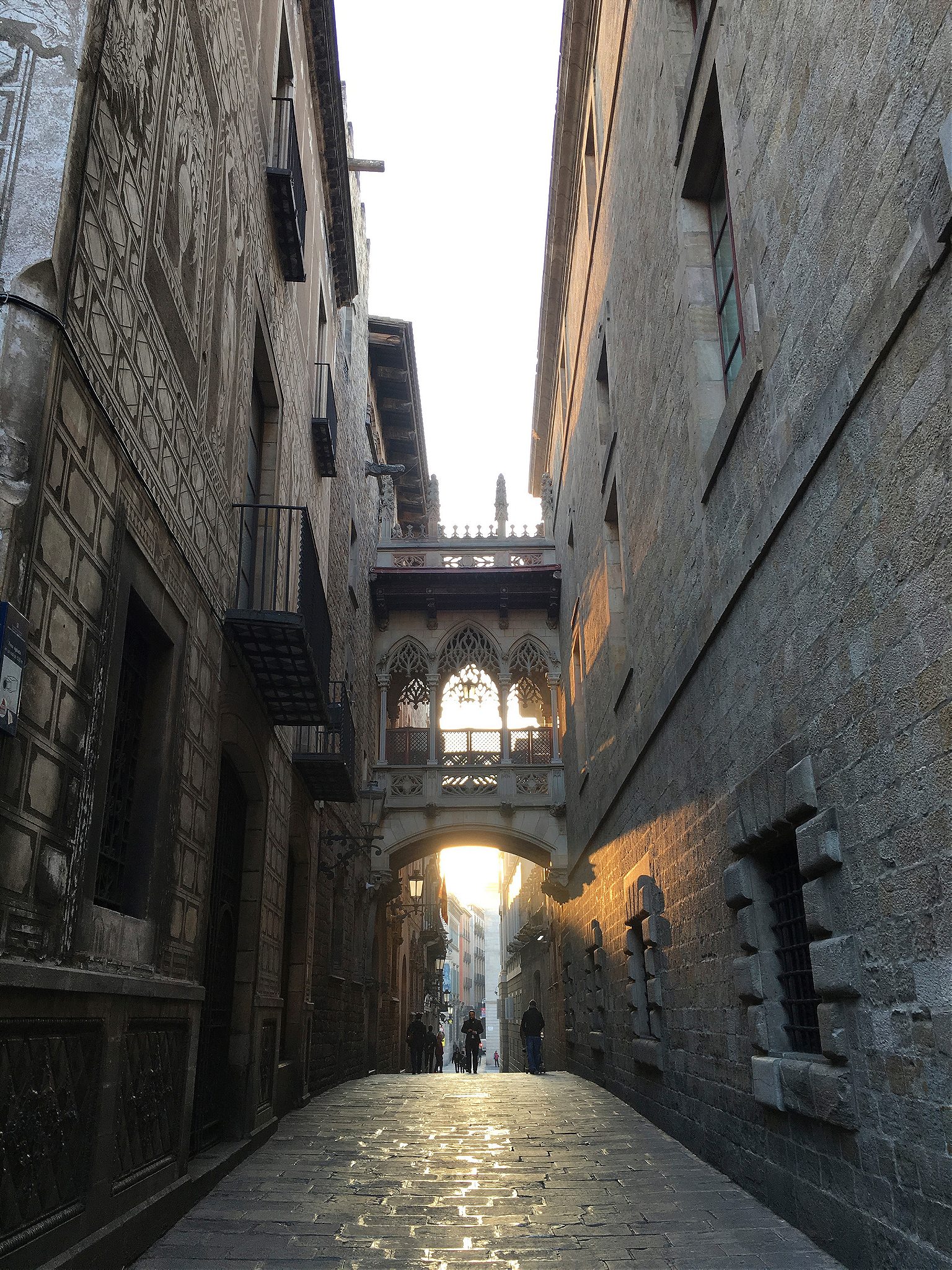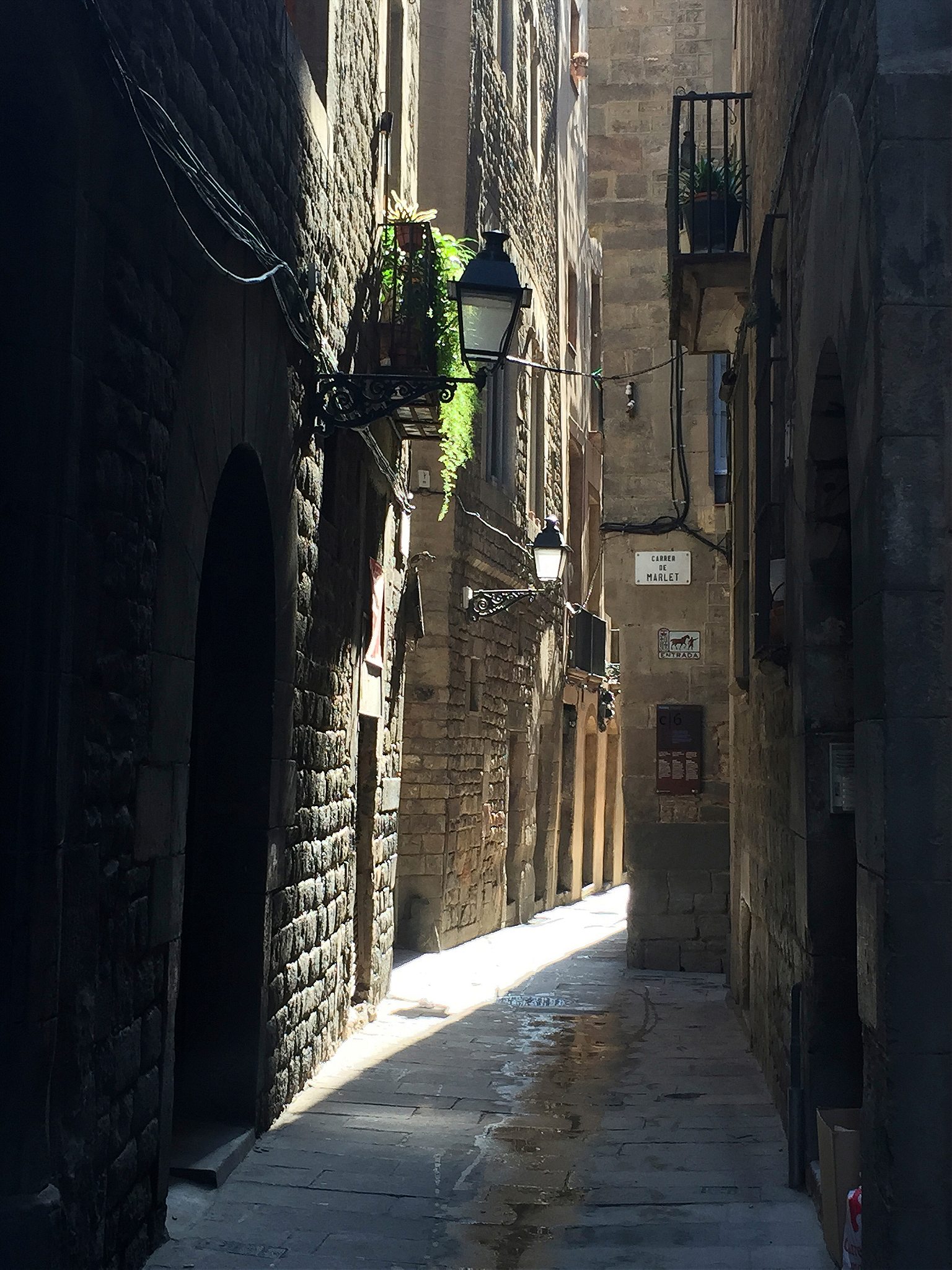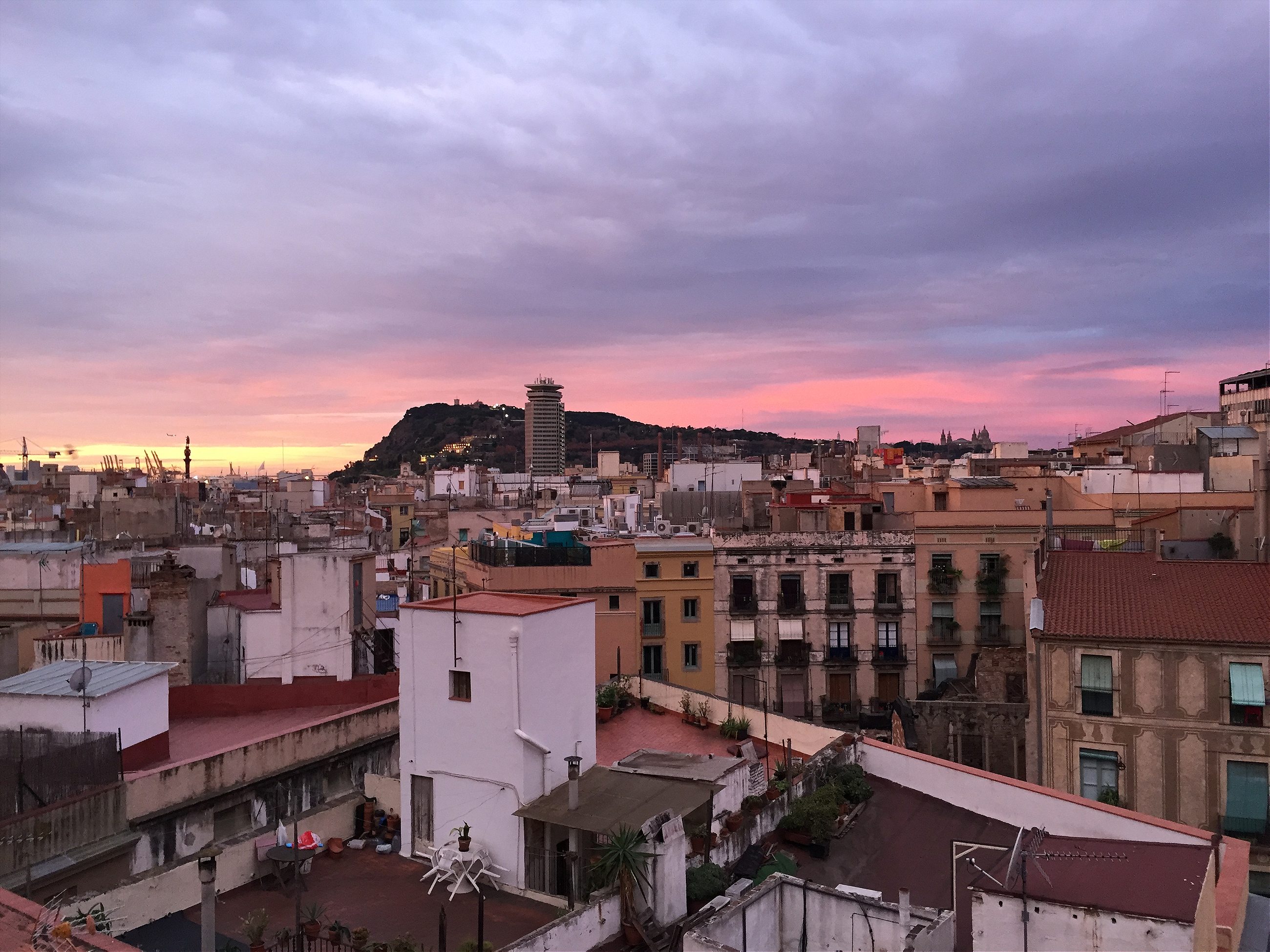Matt Goulding reflects on a terrorist attack in his adopted city.
I was 6,000 miles from home, in the back seat of a taxi with my Catalan wife, cutting through the misty mountains of southern Mexico, when the news hit. My brother, riding shotgun, turned around and passed back his phone. “Something’s happened in Spain.”
For the past few years, Laura and I have talked about the possibility of an attack frequently. It wasn’t as much a panicked hypothetical as it was a soberly assessed inevitability: When would it happen? Where and how would they strike? It doesn’t take an oracle to tell you one of Europe’s most popular cities, with the third largest concentration of international visitors on the continent, would be a target for ISIS and its wretched teenage minions. The CIA reportedly warned the Spanish authorities about an attack on the Rambla months ago, as if the Catalans needed the agency’s analysis to know they were a target.
But no amount of forecasting prepares you for barbarism of this scope. And so we sat there, speechless, watching the villages of Chiapas pass us by as the messages rolled in: Estamos bien pero en shock…Are you safe?…Where are you?…Todo bien con la familia? The same words circulated too many times in recent years, in Nice and London and Berlin, and in the corners of the world where daily acts of terror don’t register on the Richter scale of Western media. It stung, of course, but it wasn’t until we saw the photos of the van and its route of terror down the Ramblas that it took ahold of us: After traveling 600 meters down the famous thoroughfare, drilling holes through the lives of hundreds, it came to rest on top of Pla de l’Os, Miró’s magnificent mosaic, the very same red and blue and gold tiles we step on every morning on our way to the Boqueria, the great central market of Barcelona.

More than just a market run, this is a sacred ritual, one that roots us in Barcelona—the city my wife was born in, the city I’ve made home for the past eight years. We begin nearly every morning the same way, wandering the back streets of the Gothic Quarter, café con leche in hand, from Plaça del Rei to Plaça Neri, from where Columbus announced the “discovery” of the New World to where Franco and the fascists bombed a church and an elementary school. By 8:30 a.m., we’ve crossed the Rambla and settled in line behind the Catalan grandmas, who believe it their unalienable right the first pick of the day’s produce. It was here, where we buy our cuts of fat-rippled Ibérico pork and bundles of calçots, that the driver Younes Abouyaaquob fled, melting into the market crowds before slipping out the back door of the city, leaving the world with more questions than answers.
2017 has been a summer of discontent in the Catalan capital. The steadily-simmering anger and frustration surrounding Barcelona’s booming tourism industry finally boiled over in the early days of July, as groups of young malcontents aimed random acts of violence and vandalism towards outsiders. Locals in Barceloneta staged beachside protests, unspooling floating signs in the Mediterranean as a reminder to visitors and officials alike that this is their neighborhood, too. Travelers at El Prat airport have staggered through three-hour security lines, the result of a protracted strike from weary employees rundown from ever-increasing numbers that require their vigilance. Turismofobia, long a minor ailment in Spain, grew into a full-blown disease.


Of course, most people are more ambivalent about the city’s most contentious subject: they recognize that tourism pays the bills for much of Barcelona (20 percent of the city’s GDP) and are proud to live in a city loved by the rest of the world, but don’t want to see it irrevocably altered by the swells of Segway-riding, booze-swilling tourists that clog up its central arteries. And they certainly don’t want to be kicked out of their own neighborhoods by skyrocketing rents and 24-hour street parties. Consider me among the ambivalent. I live in the molten-hot center of the Gothic Quarter, a place so inundated with visitors that I need to plan my days around the ebb and flow of human bodies that course through the narrow stone corridors of Barcelona’s oldest neighborhood. I want space to live and breathe, but as a writer, I want to share the magic of this city with the rest of the world. I published a book on it. As R&K partner Anthony Bourdain told me earlier this year, as we strolled through those same corridors of the Gótico: “You’re part of the problem.”

In fact, up until the last week, terrorism has been part of the problem. Spain has been one of the few beneficiaries of the rising tide of terror washing across Europe. Its counter-terrorism forces have done some incredible work over the last few years, arresting hundreds of suspected extremists and foiling several plots for the kind of deadly attacks carried out in other cities. So, while the rest of the continent has watched visitor numbers drop precipitously—by 21 percent in Belgium since the summer of 2015, 10 percent in France (Paris alone lost 1.5 million hotel reservations in 2016)—Barcelona has experienced a 10 percent uptick in visitors in the past 12 months. The handling of this surge has been the source of no small amount of hand-wringing and soul-searching. Ada Colau, Barcelona’s current mayor, rode into office on a platform composed largely of measures aimed at controlling tourism.
Suddenly, the calculus is more complicated. Those screaming “tourists go home” have lowered their voices. The most aggressive anti-tourism forces have put down their arms. If the rest of Europe is any indication, they could soon be yelling “tourists come back”.
Spaniards know a thing or two about resilience.
Not that Spain isn’t up to the challenge. In the past 80 years, this country has lived through a brutal civil war, 36 years of brutal military dictatorship, and one of the worst economic crises ever seen in a developed nation. Spaniards know a thing or two about resilience.
Barcelona still needs to answer its most pressing existential questions—about what kind of city it wants to be, a bastion for sustainable, light-footed tourism, or a theme park for wide-eyed visitors—but the terrorists have given the city and country a set of unexpected gifts: the images of political rivals Carles Puigdemont and Mariano Rajoy, the regional and national leaders, respectively, walking shoulder to shoulder down the Rambla; the entire squad of FC Barça replacing their individual jersey names with Barcelona, putting the city on their backs for one more night; the hundreds of Muslim residents of Barcelona, most who live along the Rambla in the Raval district, flooding the thoroughfare on Sunday afternoon to stand against terror: “Not in our name” their signs read.
Indeed, this wasn’t an attack of radical Islam on a Catholic nation; this was a group of young, confused cowards against the rest of the world. The 13 people killed or injured during 30 seconds of terror on the Rambla came from 34 different countries, ranging in age from three to 80. A mosaic every bit as lovely and complete as Miro’s, a reminder that we, all of us, are Barcelona.

The attacks will not solve the political and cultural challenges between Catalunya and the rest of Spain. The tensions of tourism will not suddenly dissipate now that the city has seen tragedy. We won’t all walk arm in arm into the Spanish sunset. Nor should we. Any alliance built on the back of barbarism is likely to be shallow and short-lived.
Nor will this be the last screed dispatched about a European city under attack—not by a long shot. I’m afraid we have a lot more reckoning in front of us.
It’s been hard being so far from home after your city has been under attack. If I were closer, I might see what my friends and family have seen: that the city moves inexorably forward. “Not a few hours later, the city was back to being its lively self,” one friend wrote to me. “Crazy how quickly things got back to normal in the center,” said another in a message. Tourists swarm the old part of the city, soaking up sun and saffron and sangria in equal measure. At the base of the Rambla, packed as ever with people from every corner of the world, 200,000 souls on a given day, the Mediterranean shimmers as brilliantly as ever. We should consider ourselves lucky to live in a place whose main flaw is its own soaring popularity.
I certainly do. That’s what the morning ritual of ours has always been about, taking in the majesty of the Catalan capital in the most innocent hours of the day. Truth is, it would be easy enough to alter the habit, to walk along the beach rather than the stone corridors of the Gótico, to take my business to the relatively tranquility of Santa Caterina market instead of the chaos of the Boqueria. To avoid the acrobatics it takes to cross the Rambla. But I’m more anxious than ever to walk our morning route, to shuffle through the plazas and across Mirò’s tiles, and take my place behind the grandmas, the ones who refuse to cede ground to anyone, neither tourists nor terrorists, and wait for my daily bread.